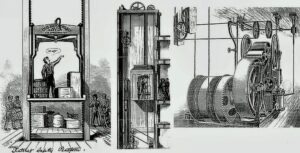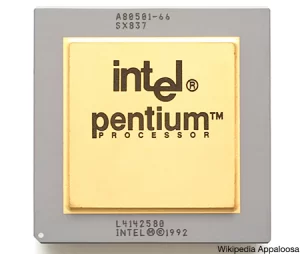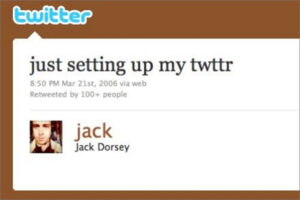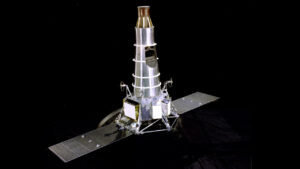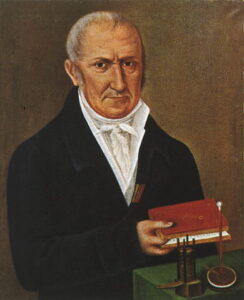The First Commercial Elevator
The world’s first commercial “safety elevator” goes into service at Haughwout Department Store in New York City. Created and installed by Elisha Otis it was powered by a steam engine which moved at a rate of 40 feet per minute and took 15 seconds to move between floors. By the 1870’s there were 2000 Otis elevators in service. The creation of a practical and safe elevator was a major step towards the development of modern skyscrapers since it made buildings with more than a few floors accessible to the general public. Ironically, this first elevator was shut down after 3 years because not enough customers wanted to use it!
First Pentiums Shipped
Intel ships the first Pentium processors, debuting with speeds of 60 and 66 MHz. With 3.1 million transistors and 4 GB of addressable memory, it was a significant upgrade from the 80486 line of processors. Also significant was the fact that Intel chose to brand this fifth generation of processors with a name that could be trademarked, departing from the 286, 386, and 486 sequence it had been using for their 8086 line of processors. The main reason for this was that AMD, who had been a second source manufacturer of x86 processors, reverse engineered Intel’s 386 processor after Intel tried to end their second source arrangement. AMD claimed that they had the legal right to manufacture x86 processors due to the contract it had with Intel. This started a long running legal feud between the two companies that lasted until 1995. Among various lawsuits, AMD successfully defended a trademark infringement claim brought about by Intel over the 386 name. The court ruled in March of 1991 that the term 386 was generic and could not be trademarked. Therefore Intel went to a marketing firm to come up with the name Pentium so it could differentiate itself from AMD’s eventual 586 clone.
Frickin’ Laser Beams Patented

The first patent on a laser is issued to Arthur Leonard Schawlow and Charles Hard Townes, who assign it to Bell Telephone Laboratories. Still, no one has figured out how to attach these “lasers” to the heads of sharks. Throw me a frickin’ bone here!
The World’s First Tweet
Twitter co-founder Jack Dorsey sends the world’s first (non-automated) tweet:
“just setting up my twttr”
Soon to be followed by the just as engrossing
“inviting coworkers”
A note to future entrepreneurs: when doing the “first” of anything, it may be for posterity so try to be interesting. Kthnx.
Launch of Ranger 9
NASA Launches Ranger 9, the last of the Ranger series of unmanned lunar exploratory spacecraft. Ranger 9 was the first moon probe to point its cameras directly in the direction of its travel, capturing 5,814 detailed images of the moon’s surface into which it would crash land almost 3 days later. It also sent back video images which were broadcast on live TV. The Ranger series was the precursor to the Apollo Moon landing program.
Yahoo Acquires Flickr

Yahoo! acquires the company Ludicorp along with its popular photo-sharing site Flickr. Later in June of 2017, Verizon Purchased Yahoo! and then in April of 2018 SmugMug bought Flickr. It was reported in 2011 that Flickr hosted 6 billion photos.
The First Battery
Alessandro Volta sends a letter to Joseph Banks, president of the Royal Society of London, describing his “electric pile”. This was the first device that could form a steady flow of electricity, now recognized as the first practical battery. Later called the “Voltaic Pile”, the entire reason Volta created the device was to prove another Italian scientist wrong. Luigi Galvani had incorrectly believed that frog muscles could generate electricity. Volta believed that the frog legs Galvani was using was simply reacting to electricity and set out to create proof. Regardless, within mere weeks the importance of this first battery was realized which allowed many further scientific advancements to be possible, such as electrochemistry. Recognizing the importance of his work, including the Voltaic Pile, the electrical unit of the Volt is named in Volta’s honor.
IBM.com and sun.com Registered
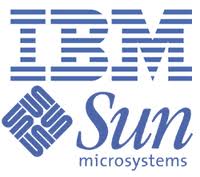
The domains ibm.com and sun.com come online. These domains are considered the 11th and 12th oldest domains in history.
Sydney Harbor Bridge Opens
The Sydney Harbor Bridge first opens to traffic. Nicknamed “The Coathanger” because of its arch design, it spans 503m across Sydney Harbor and is the world’s tallest steel arch bridge at 134m high. Along with the harbor and the Sydney Opera House, the bridge forms part of the now legendary view of Sydney. The bridge took 1,400 workers and 8 years to complete, yet it took the government of Australia 56 years (until 1988) to fully pay off the cost of building the bridge.
Arcade Game of Many Firsts
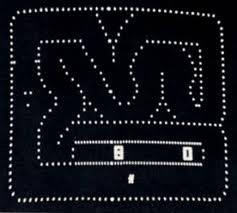
Atari Introduces Gran Trak 10. It is the first arcade game to use solid state read-only memory (ROM) to store sprites for each car, the game timer, the race track, and the score. As such, it’s the the first game to have defined characters rather than mathematically manipulated dots. The game’s controls, which include a four-position gear shifter, a steering wheel, and two foot pedals, are also all firsts for arcade games.

